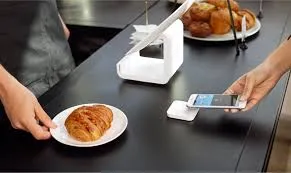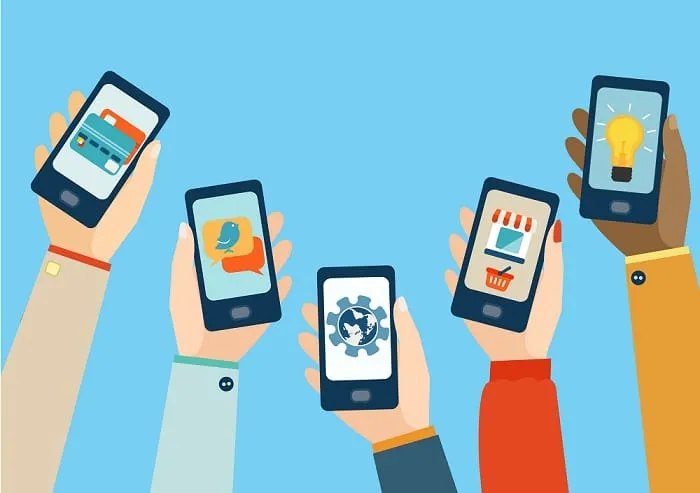

eWallets & Mobile Payments - the methods to pay with a smartphone
In 2020 the constant development of mobile payments is confirmed, the last frontier of digital payments. It is not exclusively the e-commerce sector that is involved in the development of modern payments. In fact, payments with the telephone and wearables within the store are particularly growing.
Payments with the phone are particularly used: about 47% of netizens prefer to buy products with their smartphone. The causes of the development of Mobile Payments are easily identifiable: the growing familiarity of users with technologies, the convenience of traveling without cash and the high levels of security achieved in digital transactions.
The digital payment is clearly a market full of possibilities within which the great leaders of technology did not hesitate to invest. Apple, Samsung, Google and Amazon: each company offers its own application for paying with smartphones. The identification methods are different, but all equally safe: pin, facial recognition, Touch ID and iris scan.
Payments by phone and Mobile Payment: what are they?

The term "Mobile Payment" indicates all transactions that took place via a mobile device (smartphone, smart watch or tablet). Mobile transactions, in particular payments by phone, can be of two types:
1.Mobile Proximity Payment - at the points of sale
This category of payments includes all transactions that occurred within the store through the smartphone. Mobile Proximity Payment is activated simply by bringing the smartphone, equipped with a specific payment Wallet App and NFC technology, closer to the POS payment terminal.
2.Mobile Remote Payment - remotely
Mobile Remote Payments are digital payments that take place remotely. In other words, these are all e-commerce payments, deriving from on-site purchases or through applications. The continued spread of these payments is mainly due to the development of online shopping. This type of transaction takes place within sites or through applications, recording the data of your cards or using specific e-wallets and payment apps.
Payments with the phone in the store: the methods to pay with the smartphone in the store
Mobile Proximity Payment, as explained above, includes all proximity transactions between mobile device and payment terminal. In other words, these payments imply the physical proximity between the buyer and the merchant, between the smartphone and the POS terminal. According to a recent research by the Mobile Payment & Commerce Observatory, mobile payments in the store will reach 9.5 billion USD in 2020.
You May Also interested to know - eWallet Mobile App Development - Cost & Features
Mobile Proximity Payment includes different types of payments, let's find out which:
- NFC - Near Field Communication
NFC - Near Field Communication technology is a wireless communication system operating at close range (about 4 cm). It is a technology similar to Bluetooth, able to guarantee the direct and instantaneous transfer of encrypted data from the mobile device to the POS terminal. In other words, through the NFC mode, you can transfer the money from your smartphone to the shopkeeper's mobile POS in seconds. In order for the payment to be made correctly with the phone, both the POS terminal and the smartphone must be enabled in NFC mode.
How does it work?
1.In the first place an electronic payment instrument (credit, debit or prepaid cards) is associated with the smartphone through specific Apps. There are many “Wallet” applications for paying with smartphones, starting from Satispay to get to Apple Pay;
2.The NFC function is activated below from the general settings of the device in order to allow this payment method;
3. By switching the enabled smartphone at close range from the POS device, it will be possible to make an immediate payment.
4.After implementing this procedure, the POS, by means of a light signal, will confirm the transaction.
- QR code

If it is known that QR codes are widely used in marketing and promotional applications, not everyone knows that two-dimensional codes are also payment instruments. Payment by QR works in a simple way: by framing the code displayed by the merchant via the phone's camera, it will be possible to make the transaction immediately. After framing the code, the appropriate payment App installed on the phone will record the transaction and make it valid by transferring the money.
- E-wallet
The e-wallet, also known as mobile wallet, is an electronic wallet contained within a mobile device. These payment instruments are installed on the smartphone as normal apps, which can be accessed using personalized access credentials. To use an e-wallet, simply register your payment card data within the App. Once the data is stored, it will be possible to pay using your smartphone in a simple and immediate way. The security systems used to pay with digital wallets are manifold: token, password, Face-ID or Touch-ID. The feature that makes these virtual wallets particularly useful is undoubtedly the ability to also register loyalty cards within them,
- MST - Magnetic Secure Transmission
MST (Magnetic Secure Transmission) Payments are a particular type of payment enabled on some mobile devices, in particular on Samsung devices. MST works by emulating the magnetic strip of traditional credit cards. In other words, the smartphone sends a signal capable of emulating the magnetic strip to the POS terminal to process the transaction.
Payments with the phone remotely: the methods to pay with the smartphone remotely
Mobile Remote Payments include all payments made via smartphone remotely, i.e. not within the store and not via the POS terminal. Remote transactions mostly take place online, via the App or via SMS.
Mobile Remote Payments include different types of payments, let's find out which:

- Online payments
Internet payments are now on the agenda. With the development of online shopping, online payment methods have also undergone a remarkable evolution. The types of payment with the telephone on the network are numerous: filling in special online forms with the data of your cards, instant bank transfer, PayPal services and integrated payment apps. Online payments currently enjoy modern and efficient security services. Strong Customer Authentication and 3D Secure 2.0, new authentication systems provided by the latest European regulation on digital payments PSD2, are able to guarantee fully verified and secure payments.
- Online Banking
The physical locations of the banks are rapidly giving way to the online bank. The Home Banking and Online Banking services allow the user to monitor financial data directly from the smartphone. Whoever owns an online account has the possibility to carry out various payment transactions in a simple and immediate way. Credit transfers, direct debits and postal orders can only be paid by telephone. Each banking institution has its own specific App from which to monitor its situation and with which to enable online payments. Online Banking services using particularly valid security systems: from a simple password to Face-ID recognition.
- SMS payments
SMS payments allow you to make payments simply through classic text messages. The operation of these payments is simple: payments are made by telephone credit. These payments are mostly used to subscribe to subscription services or to make donations to charities.




.jpg?mode=crop&crop=faces&ar=1%3A1&format=auto&w=1920&q=75)